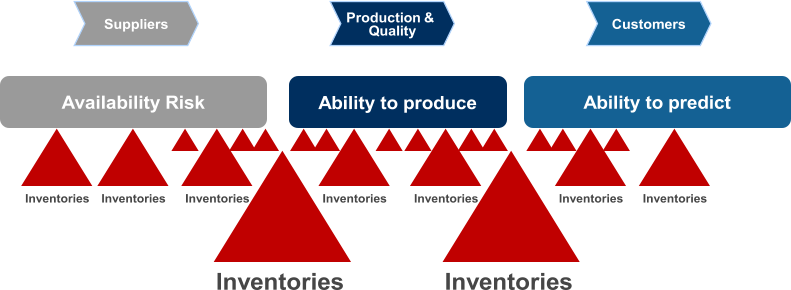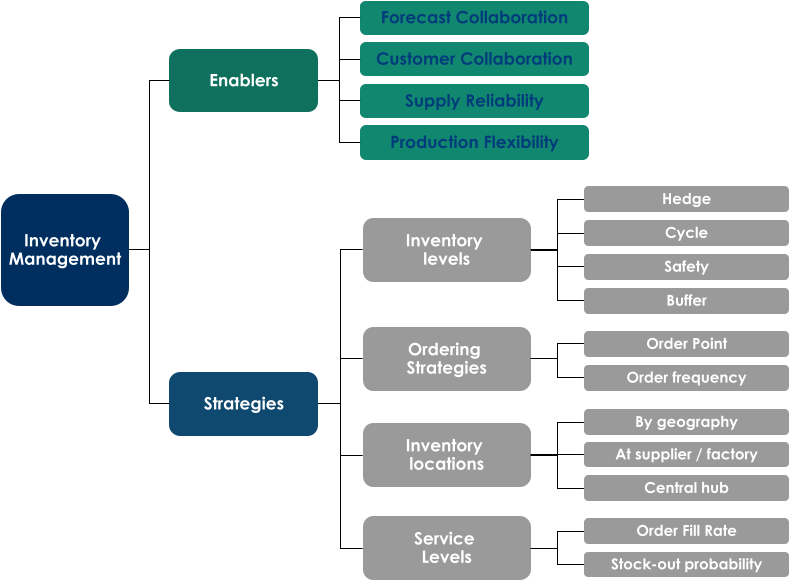

- Value Chain Excellence
- Company Business Performance
- Supply Chain Performance
- Supply Chain Strategy
- Integrated business management (S&OP)
- Digital Transformation
- Operational Improvement
- Transparency
- Complexity
- Agility
- Responsiveness
- Customer Needs
- Delivery Reliability
- SC Segmentation
- Inventory optimization
- Throughput Times
- Order Management
- Planning Excellence
- Cost management
- Logistics Cost
- Working Capital Optimization
- Supplier Optimization
- Transport Optimization
- Network Optimization
- Post Merger Integration
OPTIMIZED INVENTORIES
Optimized inventories - internally and along
the chain:
•
The supply chain is effectively a string of
buffers. Although a lot of emphasis and
efforts are on the dynamic side - processing
of goods, transport, shipments - effectively
goods wait most of the times for a next
activity
•
Waiting time for the next activitiy can follow
different objectives which need to be
defined: Safety stocks, collecting for critical
mass, waiting for the right time to be used
(e.g. in cycle stock), presentation to
customers, defending shelf space …
•
One of the key drivers of success in
inventory optimization is to know the
purpose of the inventory, and the speed
and likelyhood for the item to be consumed


The supply chain acts like a string of buffers. Most of them are inventories.
Inventories have become a normal part of running, operating, and synchronizing a supply chain.
Goods wait most of the times for a next activity. Which sometimes never comes…
But does it need to be like this? We think, sometimes no, but sometimes yes.
It is more a question of the purpose… and then the alignment needs to be worked on…

A systematic analysis of the nature of the inventories, and enablers for improved inventory, is the starting
point to understand levers to influence. But there are three more levels to go through to really address the
foundation of successful inventories..















